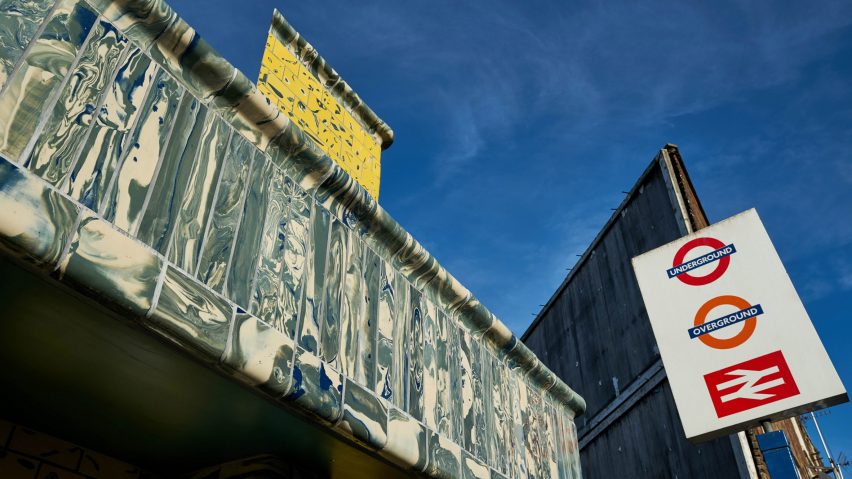
Assemble covers entrance to London tube station in colourful handmade tiles
Architecture collective Assemble and artist Matthew Raw have refurbished the entrance to Seven Sisters Underground station in London, covering it in thousands of colourful handmade tiles.
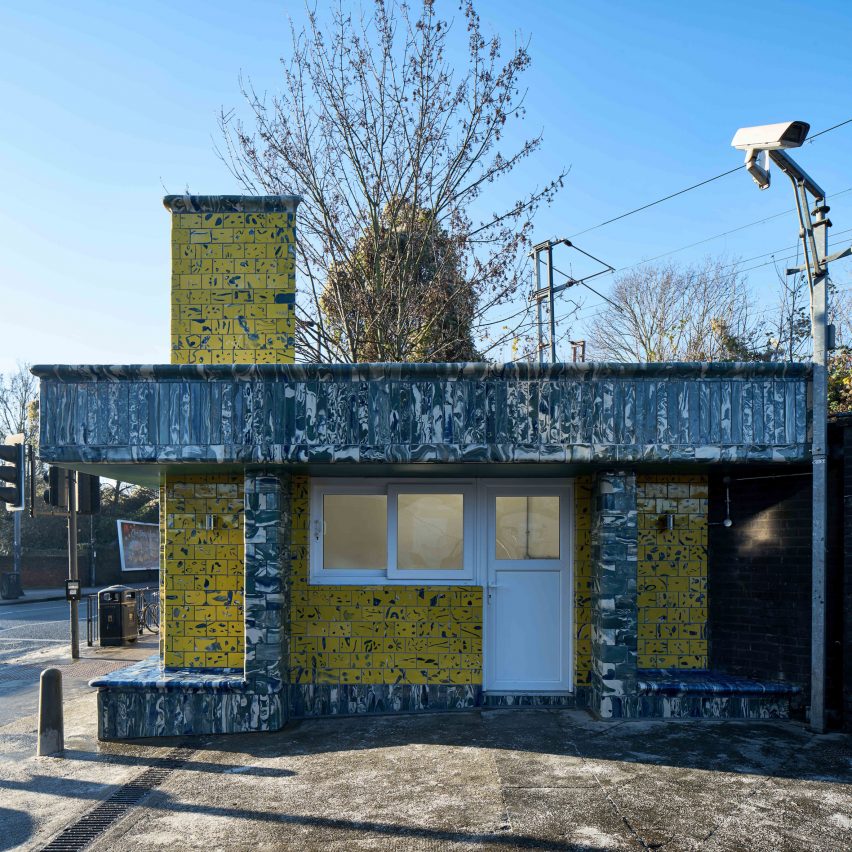
Named Clay Station, the refurbishment commissioned by Art on the Underground focused on a retail unit at the entrance of Seven Sisters that had lain empty for more than a decade.
Inspired by the countless different tile designs which are used across the London Underground network, Turner prize-winning studio Assemble worked with artist Matthew Raw to clad the retail unit in handmade tiles.
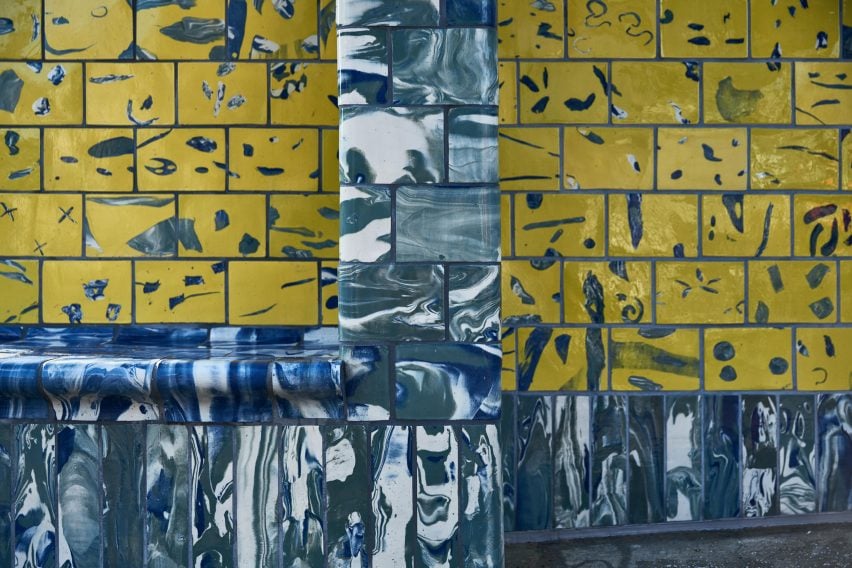
During the construction process, a kiln was set up in the space so that tiles could be made on site while also facilitating a series of workshops where local residents and community groups were able to learn the techniques to create small ceramic objects.
Through a similar process to the one used by Assemble to create its Splatware ceramics series, the new tiles were made from blocks of plain white clay coloured with body stain.
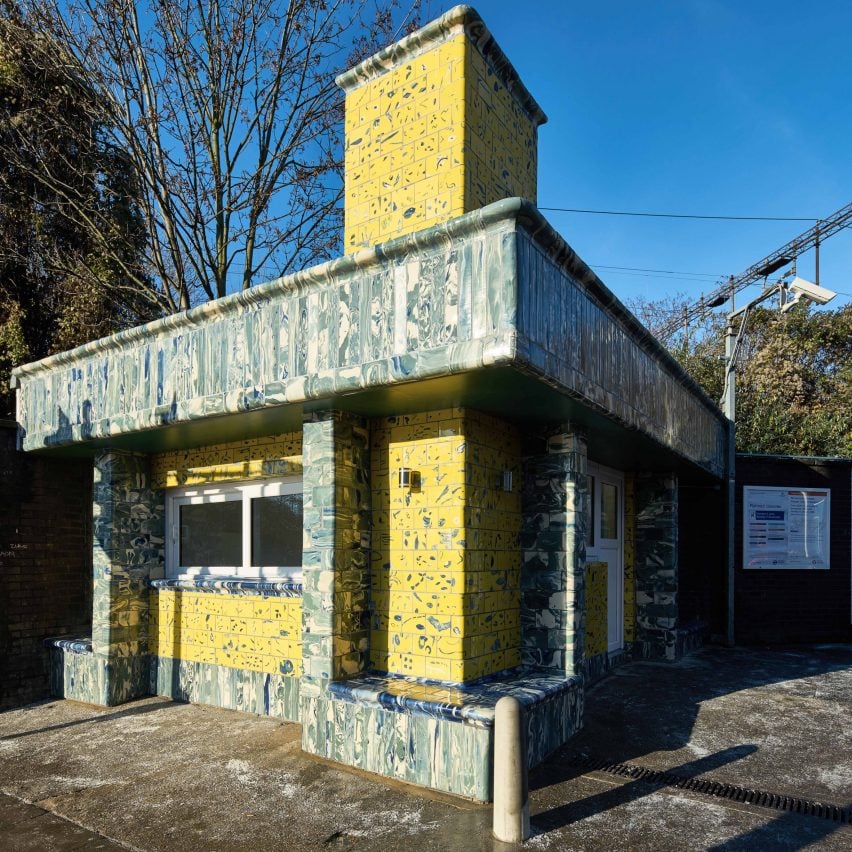
The multicoloured clay was then sized, rolled, moulded, cut, dried, fired and glazed to create more than a thousand handmade tiles, each one with a unique design.
The resulting tiles were used to clad the exterior of the building. Green and blue marble tiles cover the columns, skirt and roof, while predominantly yellow tiles wrap the walls and chimney.
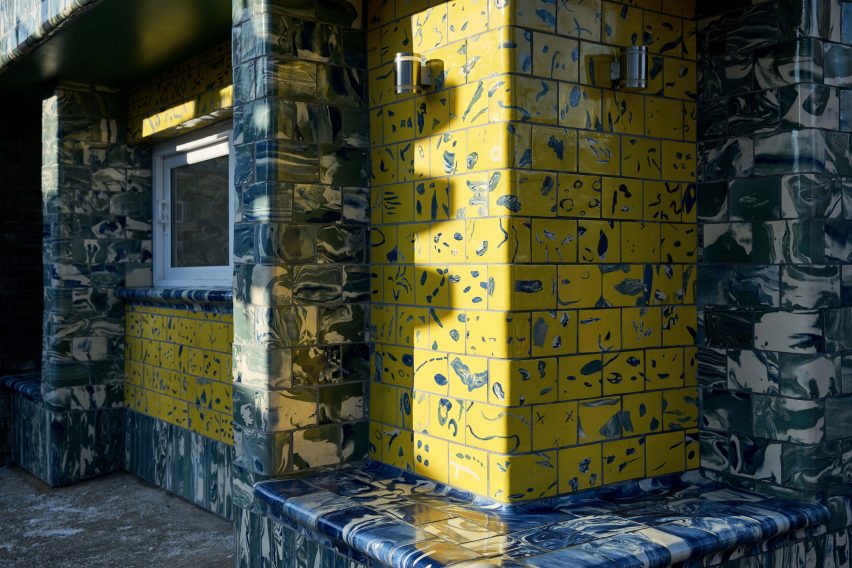
"The colourful approach we decided upon came from an extended period of experimentation in the studio," said Matthew Raw, a Royal College of Art graduate who specialises in working with clay. "As a result, each tile is a bespoke composition of different clay mixtures."
"It has been great to work with Assemble and bounce off different skill sets. During production, it quickly became apparent that cladding the kiosk with this approach was going to be a labour of love, as each element is rolled and then glazed by hand."
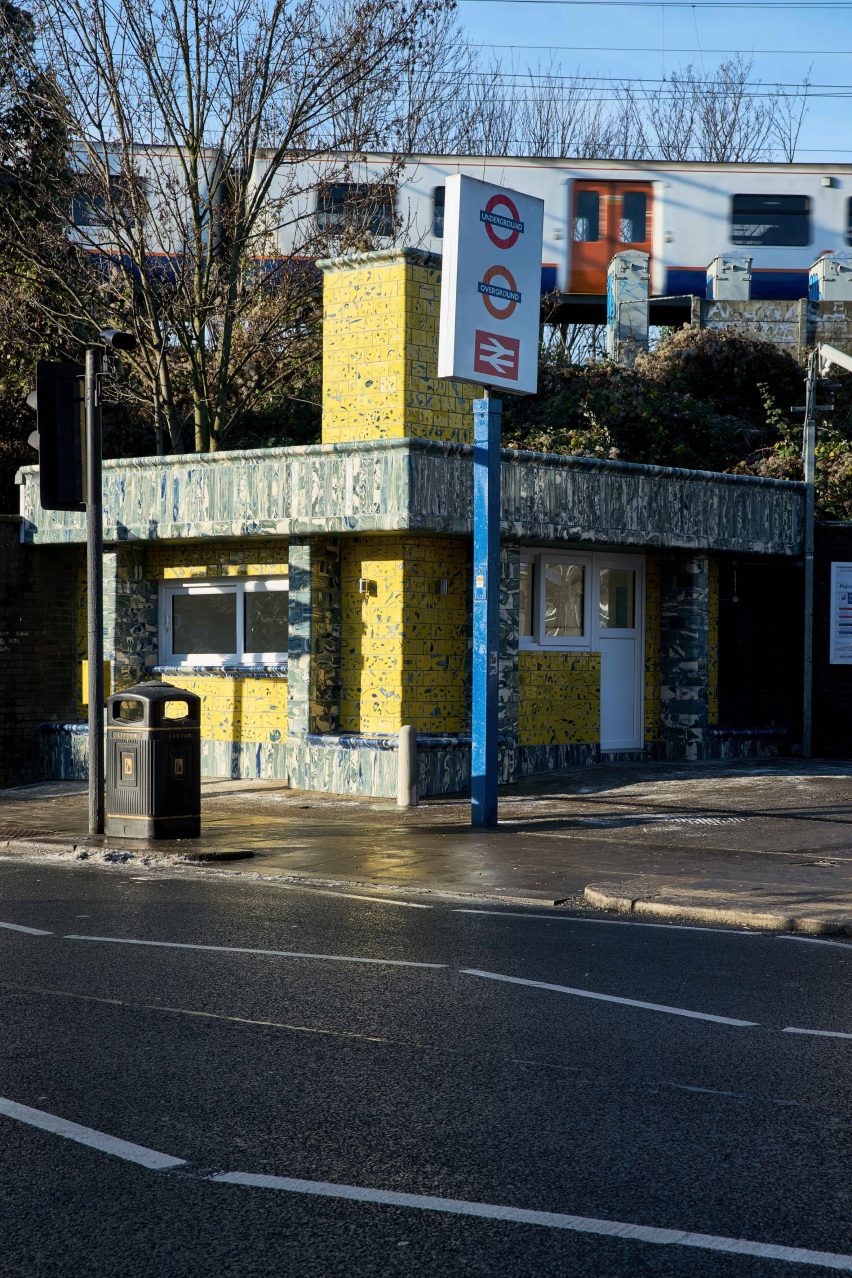
In addition, Art on the Underground collaborated with organisations A New Direction and Create Jobs to establish two traineeships as part of the project, which provided the opportunity for locals to partake in clay induction training.
Funded by Arts Council England, the training was followed by hands-on making experience with Matthew Raw and members of Assemble.
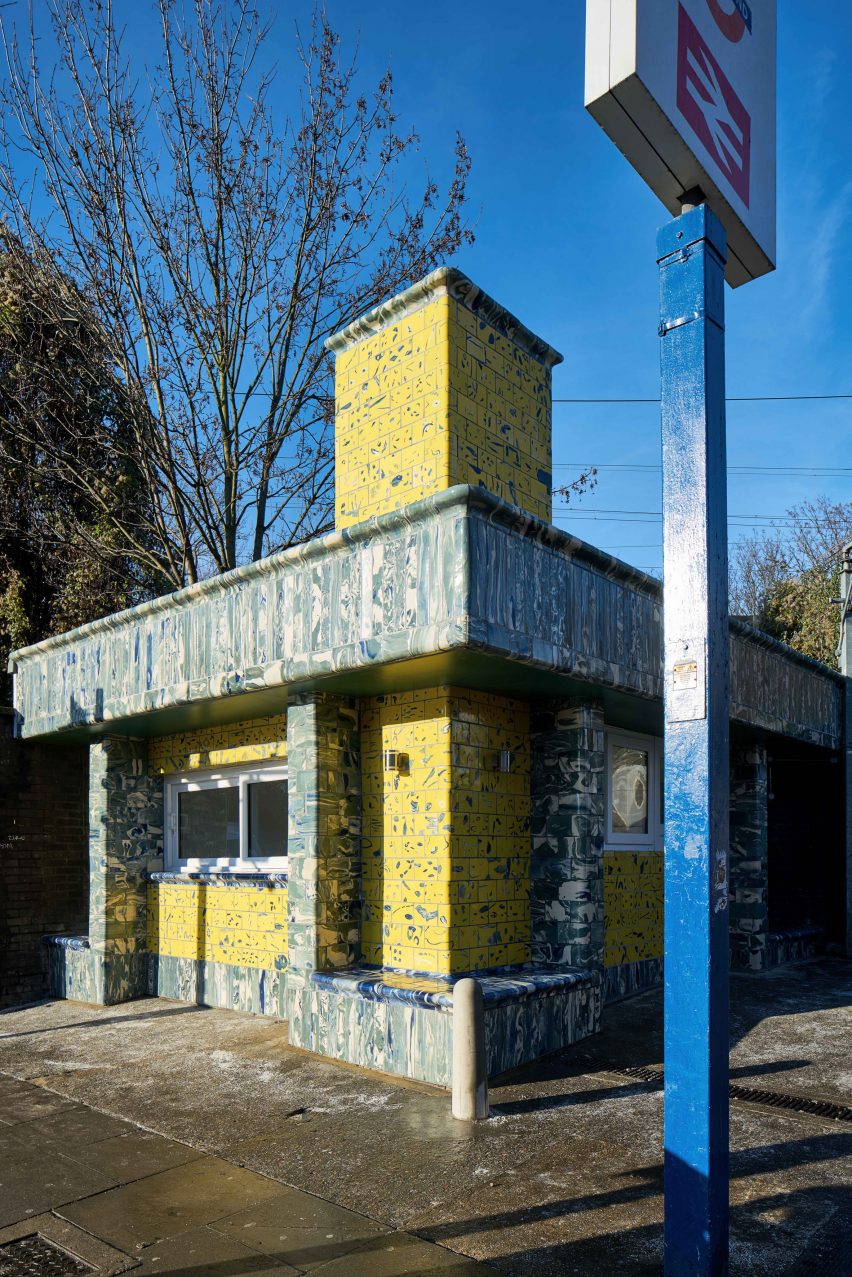
The designers hope that while building on London Underground's rich heritage of ceramics, it will also challenge bad building practice in the city – encouraging developers to place focus on care and craft.
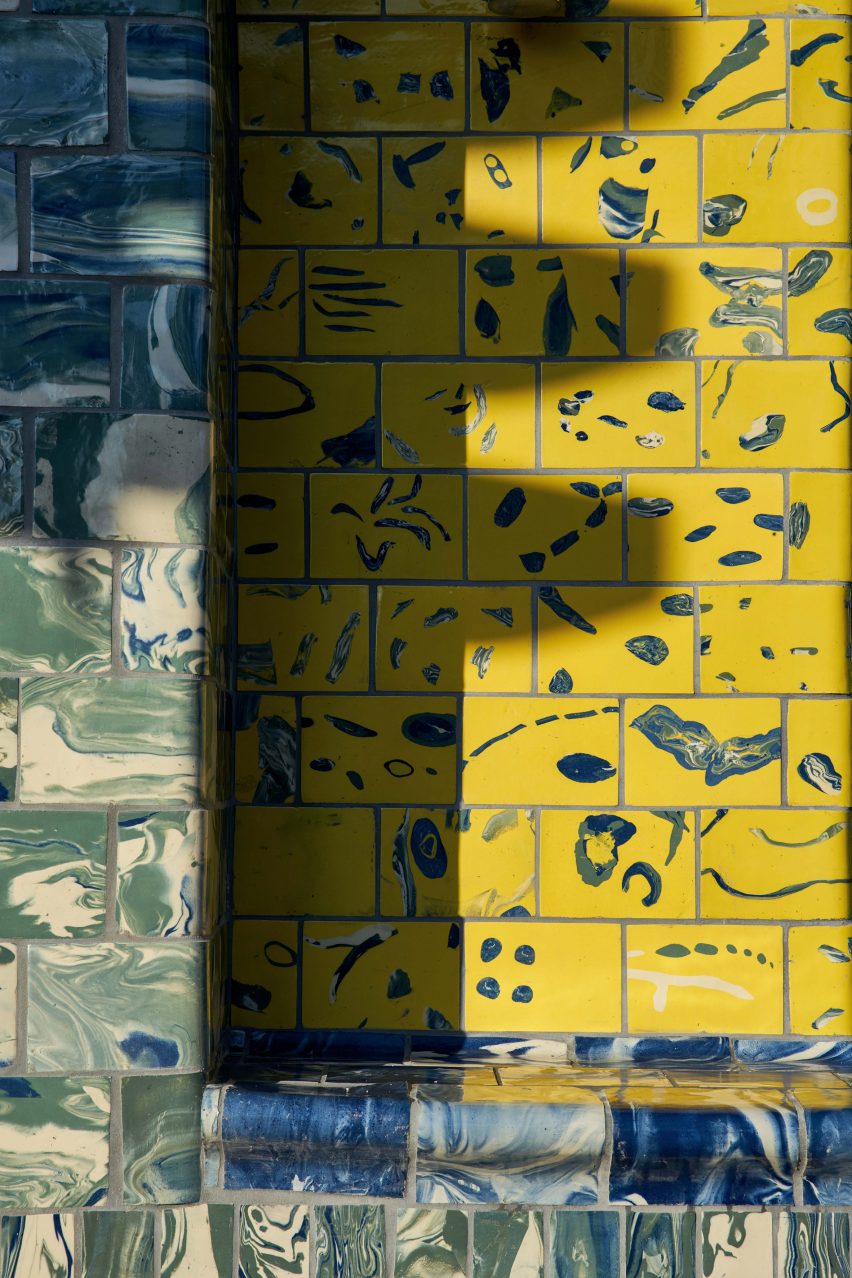
"Our collaboration with Matthew Raw for this Art on the Underground commission has been a great opportunity to experiment with architectural ceramics techniques and designs, something which has a rich history when it comes to the space of the underground," said Assemble.
"We were interested in the impact that a small corner building could have if it was brought back in to use after having lain empty for ten years and was treated with an extraordinary amount of care," they added.
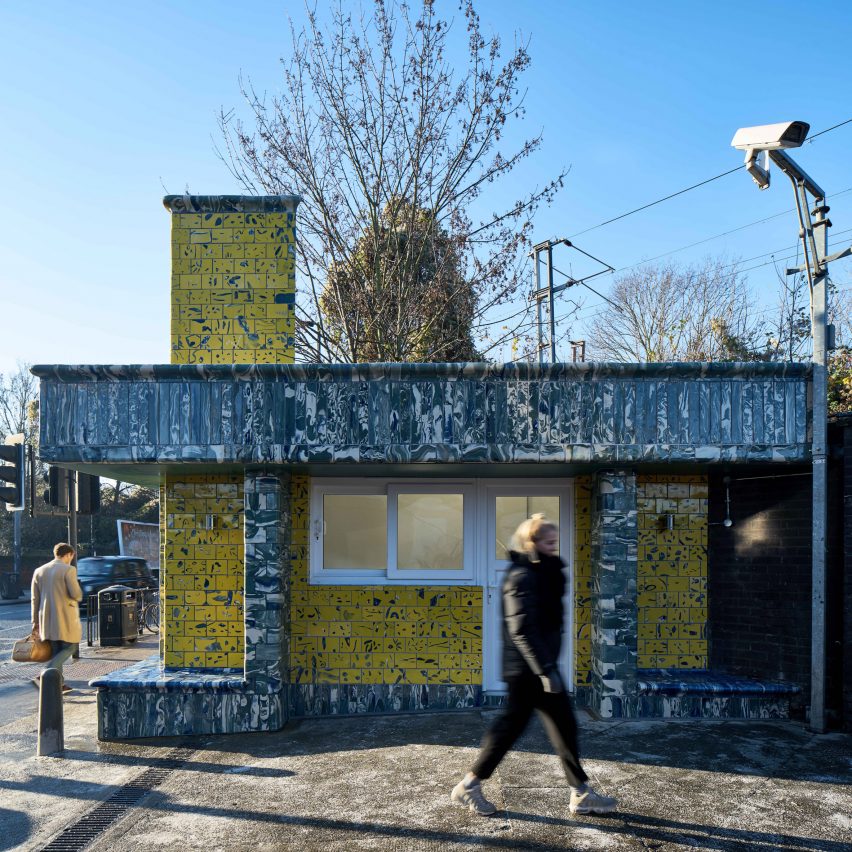
"With this new commission at Seven Sisters Underground station, we engaged with the community to restore a sense of conviviality in the area, supported by developing new skills through workshops for local residents."
"It is also an opportunity to enrich passengers' journeys by focusing on a different type of building design to what they might see in their everyday commute," she added.
Photography is by GG Archard.